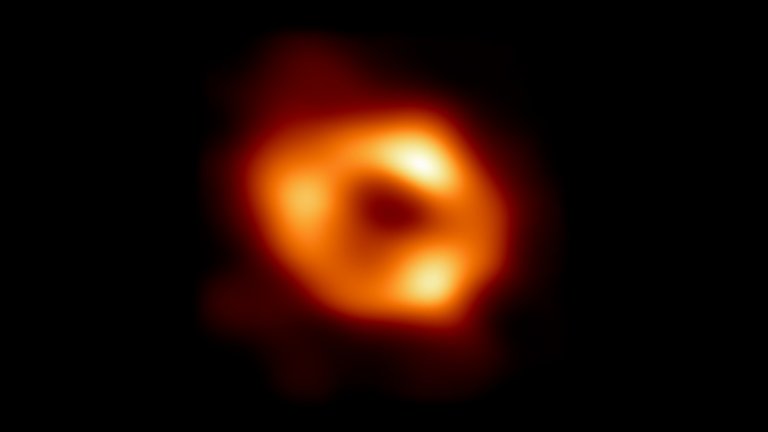
© EHT Collaboration
Scientific news
On Thursday 12 May, astronomers unveiled the first-ever image of the black hole at the centre of the Milky Way. This is a breakthrough that sheds light not only on our understanding of these mysterious objects, but also on how our galaxy works.

© EHT Collaboration
It is an extraordinary image in many ways: on Thursday 12 May 2022, astronomers unveiled the very first image of the supermassive black hole at the centre of our galaxy. Called Sagittarius A* and located about 27,000 light years from Earth, it is invisible in our sky. However, it has been observed thanks to the powerful Event Horizon Telescope (EHT), which links eight existing radio telescopes around the world to form a single, huge virtual telescope about the size of the Earth.
More importantly, this image provides the first conclusive evidence that it is indeed a black hole, as previously assumed and as predicted by Einstein's theory of general relativity. These groundbreaking observations will greatly improve our understanding of what happens at the centre of the Galaxy, and how black holes interact with their surroundings. Scientists also believe that most galaxies have a black hole at their centre, which makes this discovery all the more valuable.
This announcement follows the publication in 2019, already by the EHT collaboration, of the first ever image of a black hole in another galaxy called Messier 87. It was made possible by the ingenuity of more than 300 researchers from 80 institutes around the world, including scientists from the CNRS and in particular the Institute for Millimetre Wave Radio Astronomy (Iram), founded in 1979 by the CNRS and the German Max Planck Society for the Advancement of Science (Max-Planck Gesellschaft).
On the occasion of this extraordinary discovery, we invite you to learn more about black holes and the scientists and instruments that have made their exploration possible, through a selection of films and reports.
Our work is guided by the way scientists question the world around them and we translate their research into images to help people to understand the world better and to awaken their curiosity and wonderment.